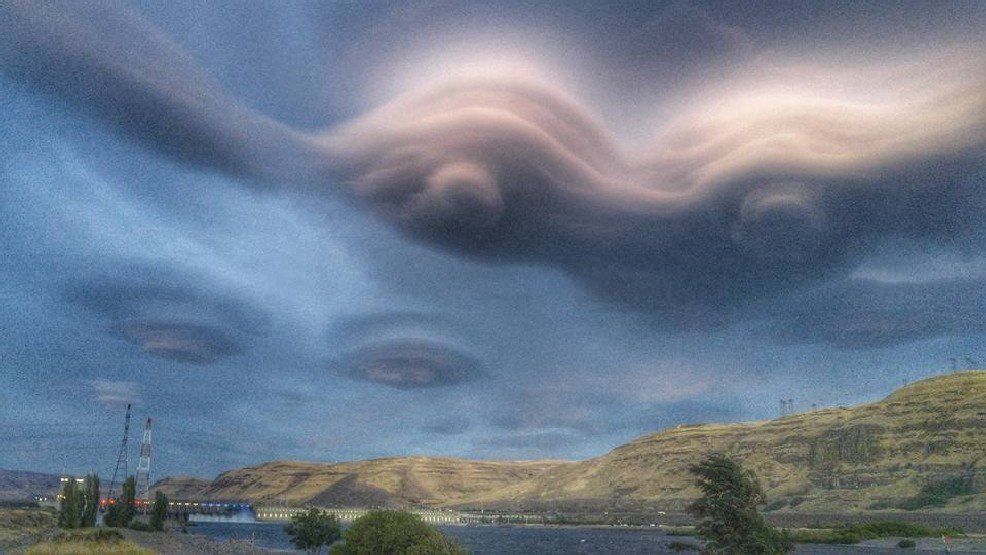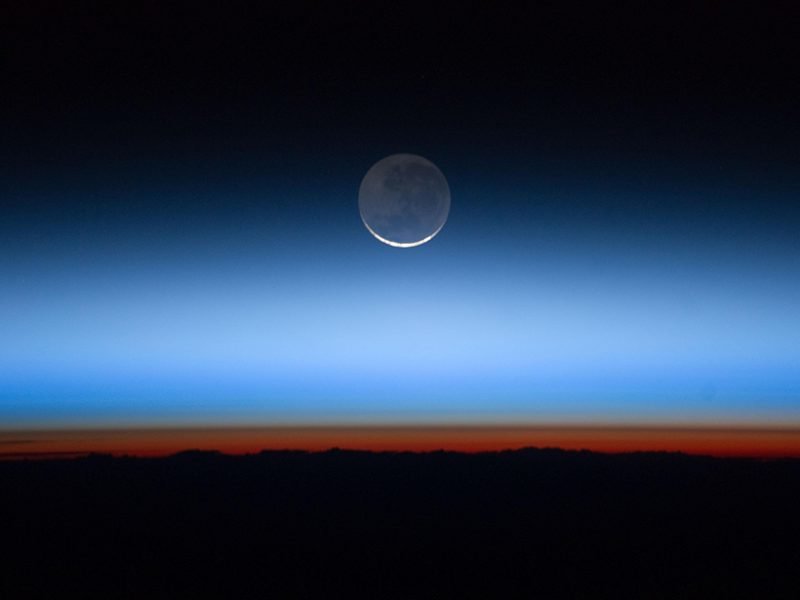
© Wendy PeteMultiple lenticular clouds spotted over the Columbia River Gorge in Central Washington on Aug. 28, 2016.
Glancing at the skies over the Pacific Northwest Saturday might have had you wondering if a request to be taken to your leader was not too far behind.
But no, it wasn't an alien invasion, just an invasion of cooler air from the Pacific Ocean that put a surreal visual stamp on the end of the recent hot weather. The spooky looking clouds are "lenticular" clouds -- so named for their lens-like shape, and while they might look ominous, the clouds themselves are fairly benign.
Lenticular clouds are created when the atmosphere is moist and almost -- but not quite -- to the point of condensation. They are most commonly seen in the Pacific Northwest near the large mountaintops, especially over and around Mt. Rainier.
As air flows over the summit, the mountain creates just enough lift that the air cools the few degrees it needs to condense into a cloud. Then when the air sinks down the windward side of the mountain, it warms and dries out, and essentially goes back to being invisible.
Depending on the horizontal air flow, you can get secondary and tertiary lenticular clouds downstream as the air propagates in the Rainier-caused turbulence where the air rises enough again to condense into a cloud, then sinks down again. And depending on how the air stacks up vertically, you can get several layers of clouds stacked like thin pancakes that give way to unusual shapes.
Watch this time lapse video from Saturday showing how the clouds form and appear to float in place:


Comment: More pictures from a photographer at Mt. Rainer: